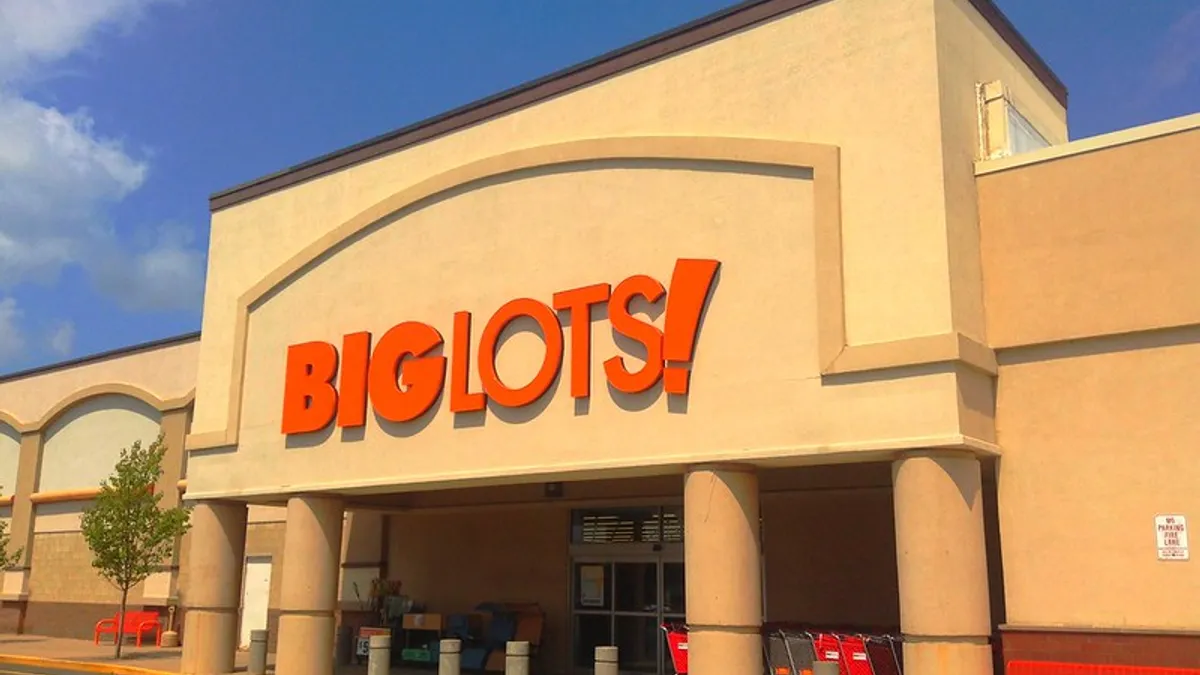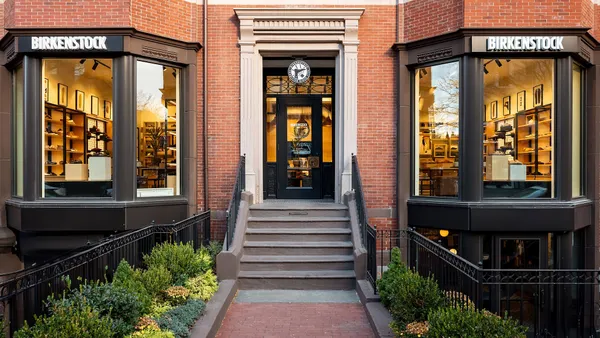Dive Brief:
- Detailing its long term ambitions, discounter Big Lots said that it could open 500 net stores, or more, in the coming years.
- The retailer plans to add more than 50 net new stores in 2022 and more than 80 per year after that, according to an investor presentation.
- The openings, together with initiatives to boost merchandise sales productivity and grow e-commerce, are aimed at bringing the retailer's sales to $8 billion to $10 billion in the long term.
Dive Insight:
Discounters have by and large missed the memo on brick-and-mortar retrenchment. Through years of bankruptcies, store closures, mall struggles and talk of a "retail apocalypse" sparked by e-commerce, off-pricers, dollar stores and others have steadily expanded their presence in the U.S.
Similar to off-price retailers like TJX Cos., Ross Stores and Burlington, Big Lots relies on the "treasure hunt" approach to retail to drive consumers to its stores and keep them coming back, looking for deals and surprise finds.
Unlike those players, Big Lots has a wide category assortment that includes food and consumables — which make up about a quarter of its sales — along with furniture, home goods, apparel, electronics and seasonal products.
Also unlike off-pricers, Big Lots emphasizes digital and omnichannel growth in its ambitions. Its e-commerce penetration stands at more than 5%, according to its recent presentation. That is a much smaller share than some retailers, but outpaces off-pricers such as Burlington, which about two years ago shut down its e-commerce operations.
That relative indifference to the e-commerce revolution can be explained by economics, as well as a simple lack of necessity. Given the consistent and significant sales growth at off-price stores over recent years — disrupted, notably, by the pandemic — it's clear that their shoppers still go to their physical stores, for the prices and for the treasure hunt.
Going forward, Big Lots wants to turn its e-commerce arm into a $1 billion sales channel and aims for digital penetration of 10% to 15%. But its plans to add hundreds of new stores — after a decade of flat store count — shows that the physical store is just as relevant as ever for the retailer. The company estimates that the store growth could add up to $2 billion in sales.
For all its long-term ambition, Big Lots has several near-term challenges to contend with. Since the beginning of the month, Big Lots has experienced "softening of traffic and sales trends which it believes, in addition to adverse weather conditions, has been significantly driven by the rapid spread of the Omicron strain of Covid-19 and its impact on consumer behavior," the company said in a press release. As a result, it expects comps to come in below expectations and to take a hit on earnings.
Aside from the recent surge in COVID-19, Telsey Advisory Group analysts led by Joe Feldman said in a research note that "Big Lots' performance remains clouded by significantly higher supply chain and freight pressures, which are likely to continue well into 2022, and the consumer spending environment uncertainty as we lap the US government stimulus in 1H22."
The retailer posted operating and net losses of more than $4 million in the third quarter. On a December call with analysts, Big Lots CEO Bruce Thorn cited fading stimulus, supply chain disruption, inflation and labor constraints as all playing a role in the company's performance.













